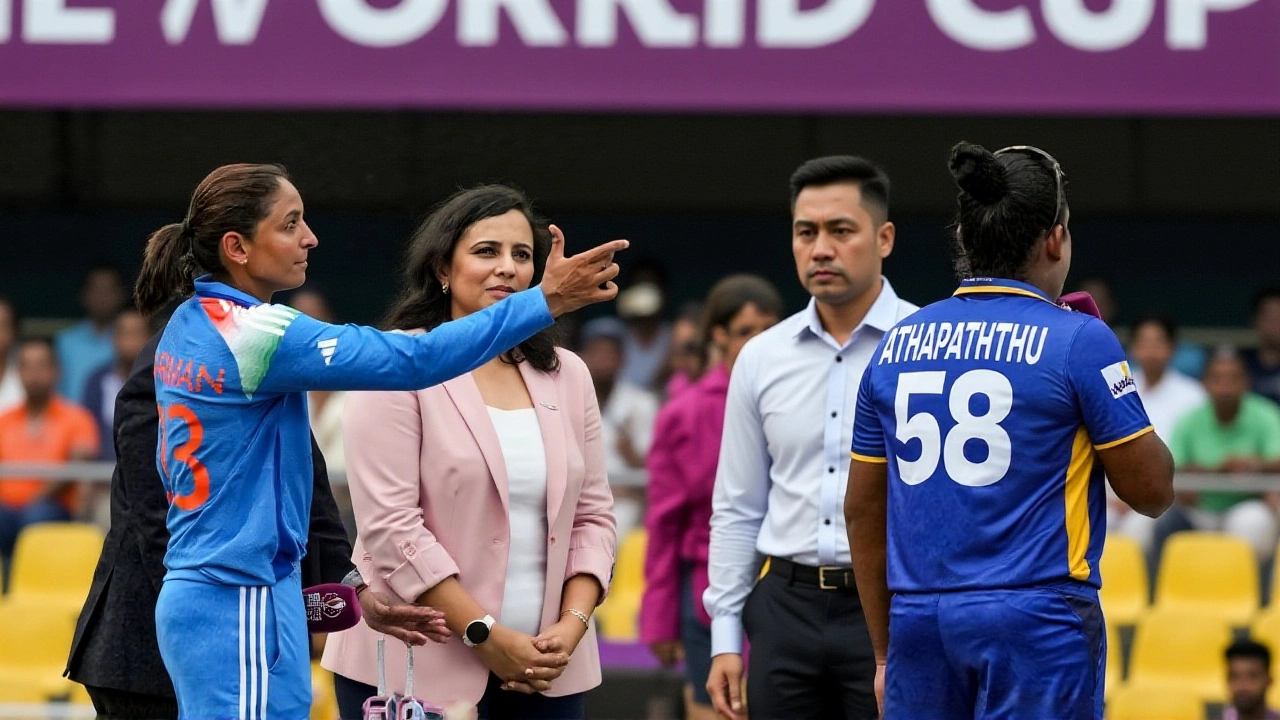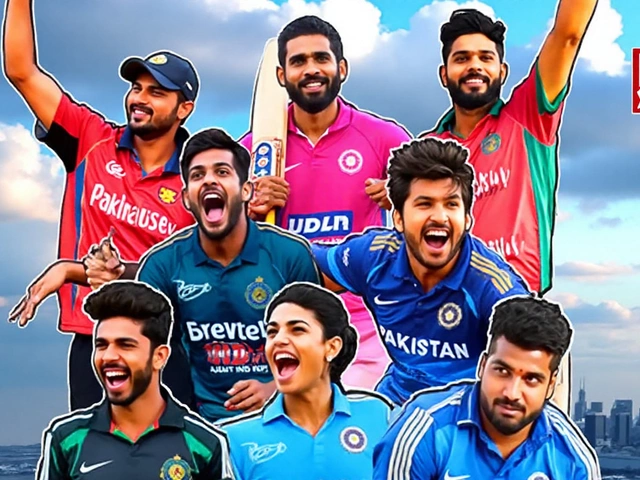When Harmanpreet Kaur, captain of India women's cricket team lifted the trophy‑ambitious side to a 59‑run victory over Chamari Athapaththu, captain of Sri Lanka women's team at Barsapara Cricket Stadium in Guwahati on 30 September 2025, the tournament’s opening day reverberated across the cricketing world. The win not only gave the world No. 3 ranked Indians a dream start at the ICC Women's Cricket World Cup 2025India, it also rekindled hopes of clinching the nation’s first ICC trophy after heartbreaking finals in 2005 and 2017. Fresh off a season where opener Smriti Mandhana amassed 928 runs at a 66.2 average, India’s fans could already feel the buzz of a possible historic moment.
Tournament Overview and Historical Context
The 13th edition of the Women’s World Cup returns to India after a 12‑year hiatus, spreading 28 league matches across venues in Guwahati, Bengaluru, Mumbai, and Colombo. Eight powerhouses—Australia, England, New Zealand, South Africa, Sri Lanka, Bangladesh, Pakistan and the hosts—jockey for the record‑breaking US$13.88 million prize pool, the largest ever allocated to a women’s sport event.
The International Cricket Council (ICC) hopes the high‑stakes format, coupled with massive broadcast deals, will close the gender gap that still sees women’s cricket earning less than half of the men’s share, even after the 2023 men’s edition. For India, the home‑soil advantage is a double‑edged sword: familiar pitches and roaring crowds can boost performance, but the pressure to deliver a maiden title is now visible in every locker room.
Match Highlights: India vs Sri Lanka
India posted 176/5 in their 50‑over innings, anchored by a stellar 78 from Smriti Mandhana and a quick‑fire 45 from Jemimah Rodrigues. The opening partnership of Mandhana and Pratika Rawal put on 78 runs in just 11 overs, setting a comfortable platform.
In response, Sri Lanka struggled against India’s re‑energised pace line. Renuka Singh claimed 3/22, while spin duo Deepti Sharma and Radha Yadav each took two wickets. Sri Lanka were bowled out for 117, with captain Athapaththu top‑scoring at 32.
- India: 176/5 (50 overs)
- Sri Lanka: 117 (38.3 overs)
- Result: India won by 59 runs
- Man of the Match: Smriti Mandhana (78 runs)
Key Performances and Player Form
Mandhana’s innings was more than a run‑builder; it was a statement of intent. After smashing four centuries this year, the 29‑year‑old’s 928‑run tally in 14 ODIs underscores why analysts label her the tournament’s leading batter. Her ability to rotate strike while punishing loose deliveries kept the scoreboard ticking.
For Sri Lanka, 20‑year‑old prodigy Dewmi Vihanga showed flashes of brilliance, scoring 26 off 19 balls before the inevitable collapse. Still, the lack of depth in the middle order remains a concern for the co‑hosts.
Bowling Attack and Tactical Insights
India’s pace unit, after a year plagued by injuries, finally returned to full strength with Renuka Singh leading the charge. Her ability to generate upfront bounce on Guwahati’s slower‑turning surface troubled the Sri Lankan top order. The spin contingent, anchored by all‑rounder Deepti Sharma, provided vital control in the middle overs, restricting runs and forcing errors.
Conversely, Sri Lanka’s bowling relied heavily on veteran spinner Sugandika Kumari, who failed to make an impact. Their pace duo, Udeshika Prabodhani and Kavisha Dilhari, lacked the incisiveness required on a surface that favoured the home side’s seamers.
Stakes, Rivals and Road Ahead
With Australia entering as clear favourites—boasting seven titles and a squad led by Alyssa Healy—India’s path is anything but easy. England, New Zealand and South Africa also pose serious threats, each equipped with deep batting line‑ups and versatile bowling attacks.
India’s next fixture is a clash against England on 5 October in Mumbai, a showdown that could cement or crumble the early momentum. The looming rematch with Sri Lanka in Colombo on 5 October offers the hosts a chance to avenge the opening loss and gain crucial points on foreign soil.
Beyond the silverware, the tournament serves as a barometer for the growth of women’s cricket in South Asia. A successful campaign could galvanise grassroots participation, attract sponsorship, and push the Board of Control for Cricket in India (BCCI) to allocate more resources toward the women’s game.
Frequently Asked Questions
How does India's opening win affect their chances of winning the World Cup?
The 59‑run victory puts India atop Group A with full points, boosting confidence and net‑run‑rate. It also gives the batting lineup early validation, especially for in‑form players like Mandhana, which historically correlates with deeper tournament runs.
What are the key challenges India faces against the tournament favourites?
Australia’s depth in both batting and fast bowling, combined with England’s adaptable middle order, pose the biggest hurdles. India will need to maintain their current bowling accuracy and ensure the middle order—Rodrigues, Richa Ghosh, Deepti Sharma—can chase under pressure.
Why is the prize money of USD 13.88 million significant for women's cricket?
The record purse outstrips the 2023 men’s World Cup pool, signalling a shift toward gender‑parity in cricket finances. It offers players financial security, encourages national boards to invest in development programs, and draws higher viewership from sponsors.
What impact does the home crowd have on India’s performances?
Playing in familiar conditions—slow‑turning pitches and humid weather—combined with vocal support can lift player morale and pressure opponents. Past tournaments show Indian teams winning ~70% of home matches, a statistical edge that could be decisive.
When is the next match India plays, and why is it pivotal?
India faces England on 5 October at Wankhede Stadium, Mumbai. England are the second‑strongest side on paper, and a win would cement India’s position as top‑seeded contenders while providing a crucial momentum boost before the knockout stages.



